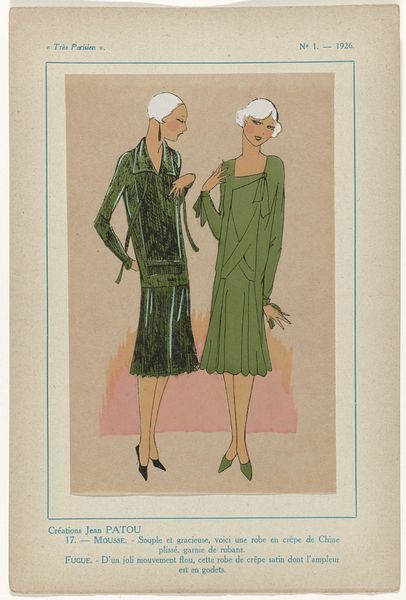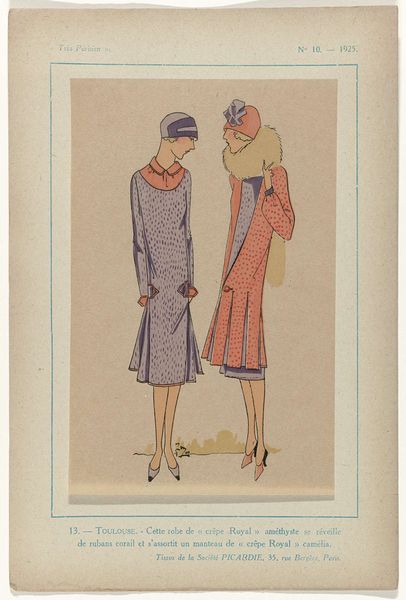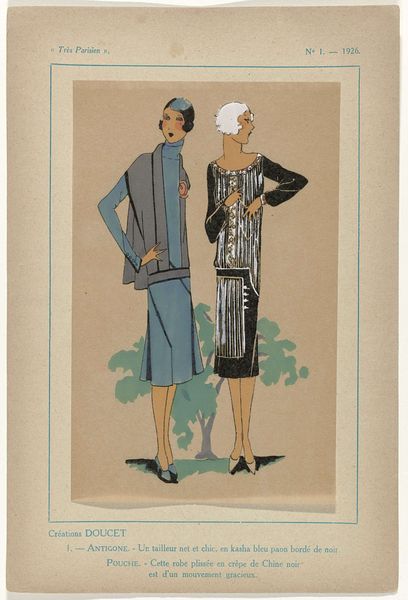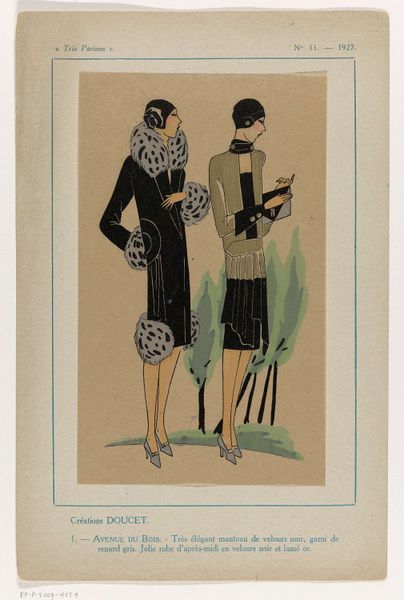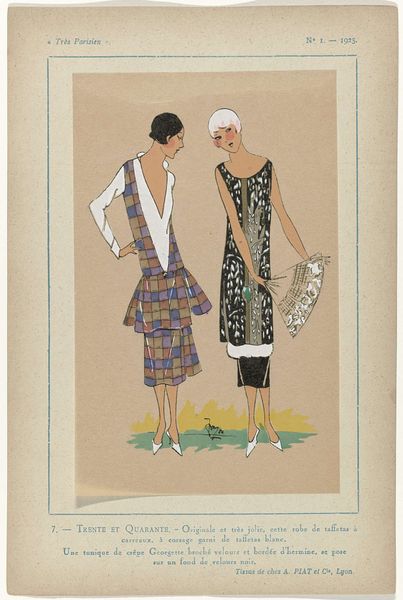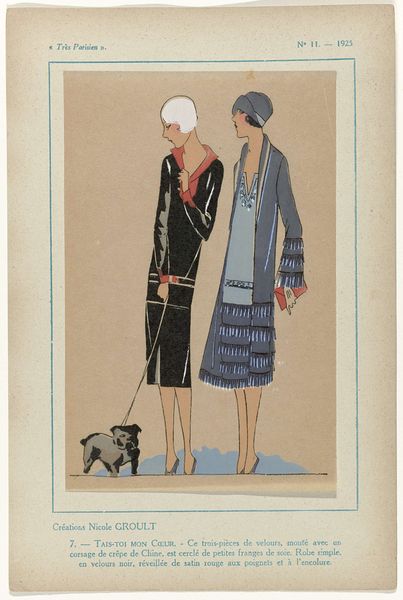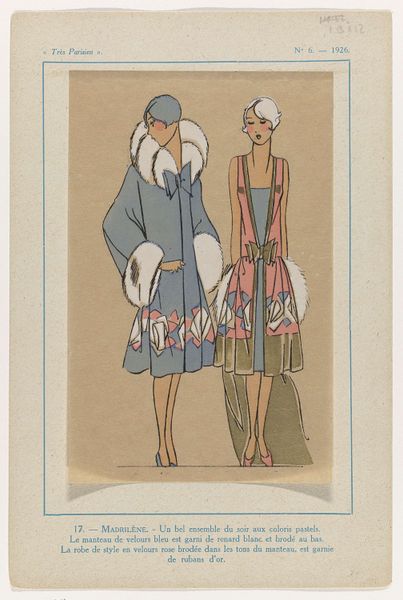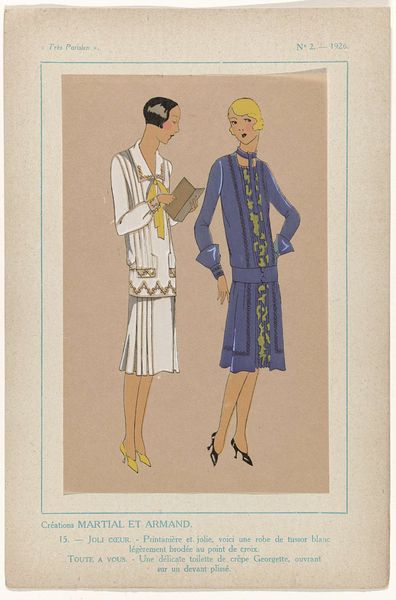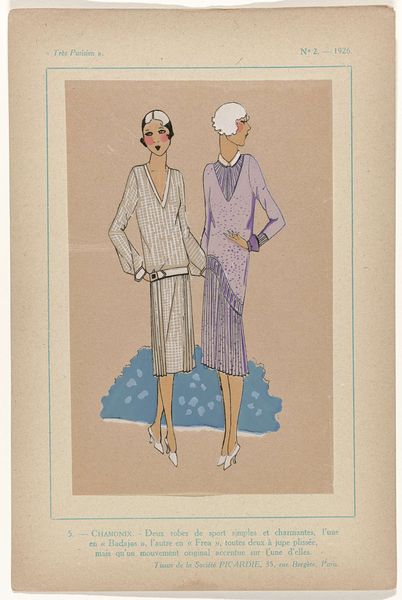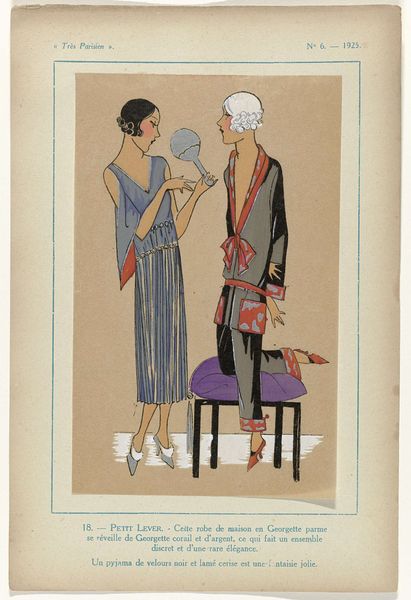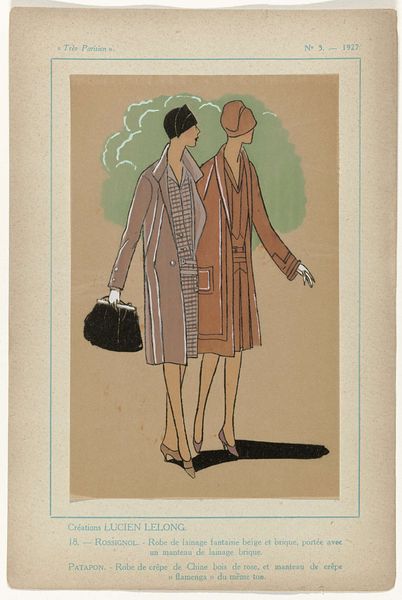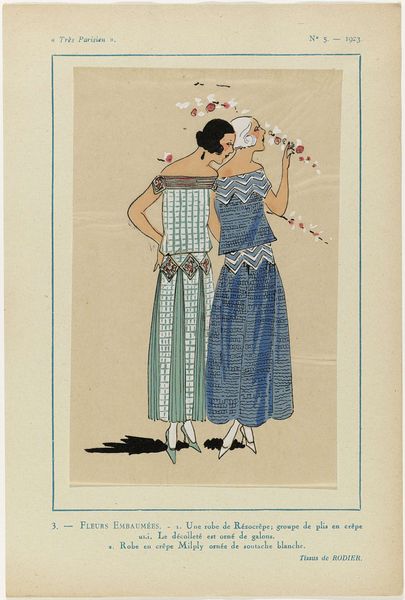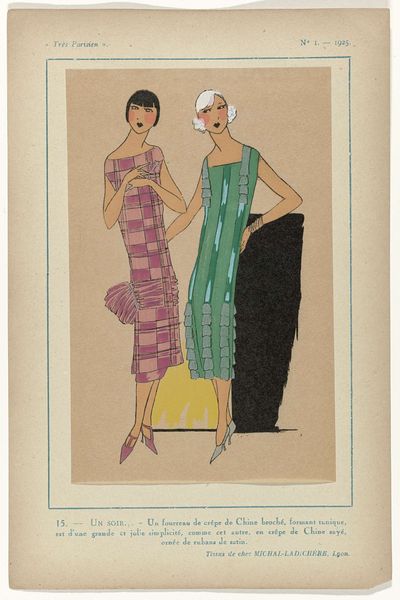
watercolor
#
portrait
#
art-deco
#
figuration
#
watercolor
#
historical fashion
#
watercolour illustration
Dimensions: height 195 mm, width 120 mm, mm
Copyright: Rijks Museum: Open Domain
Curator: This watercolour illustration, now held at the Rijksmuseum, is titled "Trés Parisien, 1925, No. 10, Pl. 14: - LA CHASTE SUZANNE", attributed to G-P. Joumard. It epitomises Art Deco fashion illustration of its time. Editor: It's quite striking, the two figures. The one in pink almost appears to float, while her companion feels very grounded and modern. The overall impression is one of sophisticated aloofness, perfectly capturing the spirit of the Roaring Twenties. Curator: Absolutely. This image embodies the shifts in societal expectations around women in that era. The Art Deco style, with its bold lines and geometric shapes, offered a visual vocabulary for the "New Woman," confident and liberated from older constraints. Consider the context of flapper culture and evolving public role for women reflected here. Editor: Yes, there's that immediate impression of “flapper.” The caption refers to the first woman’s fur-trimmed velvet cape, a high-status accessory, while also referencing her chastity. Is it suggesting some contradiction between new freedoms and traditional virtues? I also sense something deeper, like figures in a medieval diptych symbolizing ideals of feminine comportment. Curator: Intriguing thought. Certainly, we need to look closer at how images and objects accrue and maintain specific cultural connotations over time. Here, "chastity" seems ironic or tongue-in-cheek, given the overtly modern clothing. Fashion plates, published in periodicals, played a significant part in shaping what was publicly fashionable in Europe’s modern cities at the time, not merely among a handful of privileged people. Editor: I find their slender figures with downturned eyes quite compelling, almost iconic in their stylisation. What does it signify, beyond aesthetic elegance? There’s something melancholy conveyed here that contrasts with the seemingly liberated fashion. Curator: Perhaps it signals a period of reflection amidst all the social change, hinting at both opportunity and its associated complexities. The image functions, on a simple level, to display what’s in vogue. But it communicates a subtler message. Editor: Yes. I see now both tradition and a radical future projected onto a woman's fashionable dress. Curator: Precisely. These figures carry significant weight for the public perception of women during this transformative period. Editor: Indeed, Joumard’s illustration distils that era's shifting visual lexicon for an audience fascinated by emerging fashion and feminine roles.
Comments
No comments
Be the first to comment and join the conversation on the ultimate creative platform.
